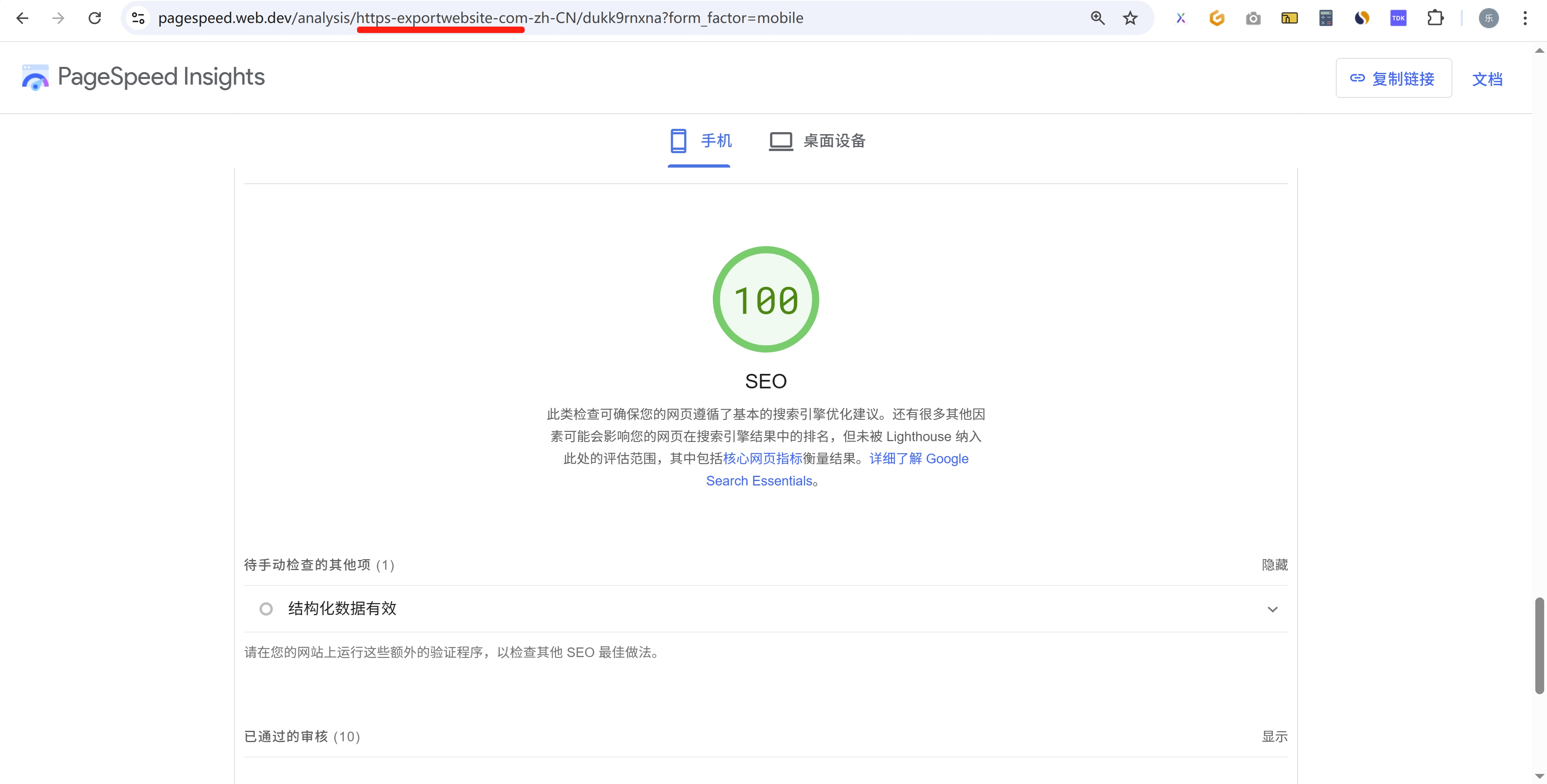First, you need to have the ability to achieve a perfect SEO score of 100 for your website before you can teach others how to do it. The image below shows the SEO score detected by Google's official testing tool for our official website, which is exactly 100 points, haha. (Reading this article may require a bit of technical background; friends without technical knowledge can simply get a basic understanding.)

Before we begin, let's first understand the three categories of SEO: On-Page SEO, Off-Page SEO, and Technical SEO.
1. On-Page SEO: Creating Content
By optimizing webpage content and structure, creating high-quality and highly relevant page content, reasonably laying out keywords, optimizing title tags, meta descriptions, header tags, and other HTML elements, we can enhance user experience and search engine friendliness.
2. Off-Page SEO: Building Backlinks
By obtaining high-quality backlinks, promoting on social media, and getting references from external websites, we can enhance the external influence and brand reputation of the website, increasing its authority and credibility.
3. Technical SEO: Technical Optimization
By optimizing the technical architecture and performance of the website, we ensure that search engine crawlers can efficiently crawl and index the website's content while providing users with a smooth and friendly browsing experience.
To achieve a perfect SEO score of 100, most of the work needs to be focused on Technical SEO, with some on On-Page SEO. Below, we will sort and explain familiar SEO strategies to less familiar ones:
1. TDK, each page of the website has different content, so each page should set the corresponding Title, description, and keyword values, which can help search engines understand the main content of the page.
2. H1 Tag, each page needs to have exactly one H1 tag, and then add corresponding H2 and H3 tags as needed to enhance the page's structure. Improving user experience is an important aspect of good SEO.
3. Image Tag Alt Attribute, set the Alt attribute value for each image, which helps search engines understand your image content.
4. Link Descriptions for a Tags, add descriptive text content for each button on the page to help search engines understand the function of your buttons, and try to avoid meaningless phrases like "click here" or "see more."
5. Structured Data, setting structured data can help search engines better understand page content and display rich key information in a hierarchical manner in search results, thereby increasing customer click-through rates.
6. Social Media Tags, after setting this tag content, when you share your website on social media platforms (such as Twitter, Facebook, etc.), it will display well-formatted key information, similar to the content shared on WeChat in China, which is quite user-friendly.
7. Canonical Tag, used to solve duplicate content issues, specifying a main URL on the page to prevent search engines from treating similar page addresses as duplicate content, which would dilute the weight of that page.
8. Robots.txt File, this file needs to be placed in the root directory of the website to guide search engine crawlers on which pages can be crawled and which pages should be disallowed, such as login links, backend API addresses, etc., which do not need to be crawled.
9. Sitemap.xml File, it is an XML file that contains the URLs of all important pages of the website, used to help search engines discover and index your website's content more efficiently. Generally, you can see the relevant page addresses of your website by adding /sitemap.xml to your domain.
10. Robots Meta Tag, this is probably the most important meta tag of the website, as it controls whether the page can be indexed by search engines. Generally, it is set to "index, follow" for the page to be crawled by search engines.
11. Hreflang, used to inform search engines which version of the webpage should be displayed in search results for specific languages or regions.
12. Other points that are beneficial for improving SEO scores: improve page loading speed, mobile-friendliness, SSL certificate (HTTPS), and reduce 404 errors.
If you find this article useful, please give it a thumbs up. If you have B2B independent site building needs, remember to contact Xiaoji Chuhai.
